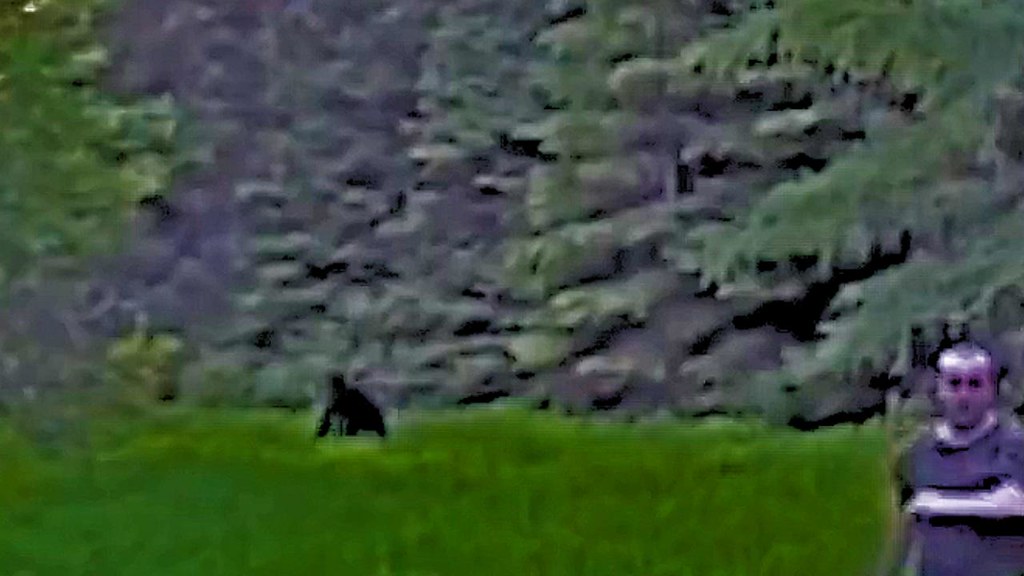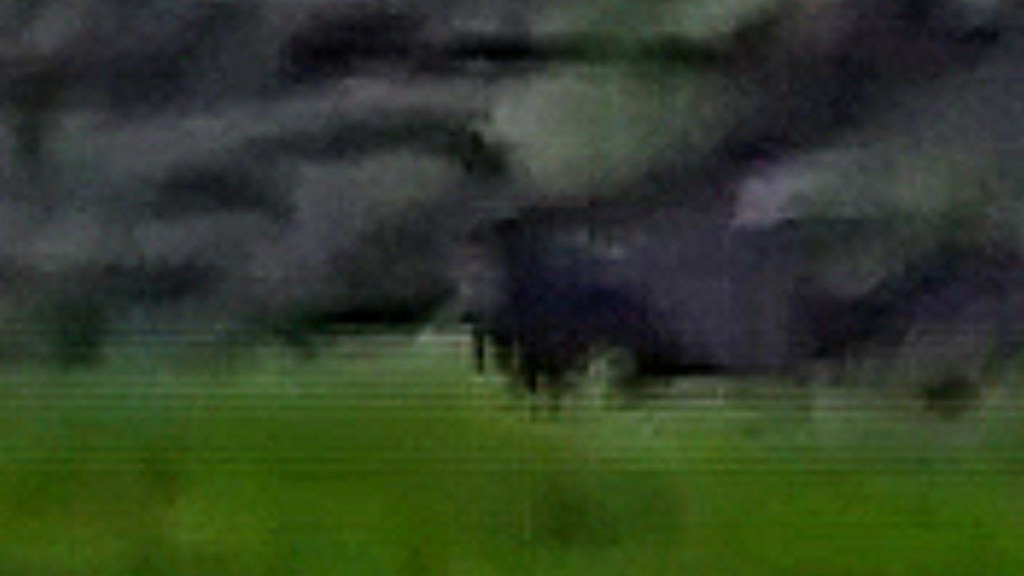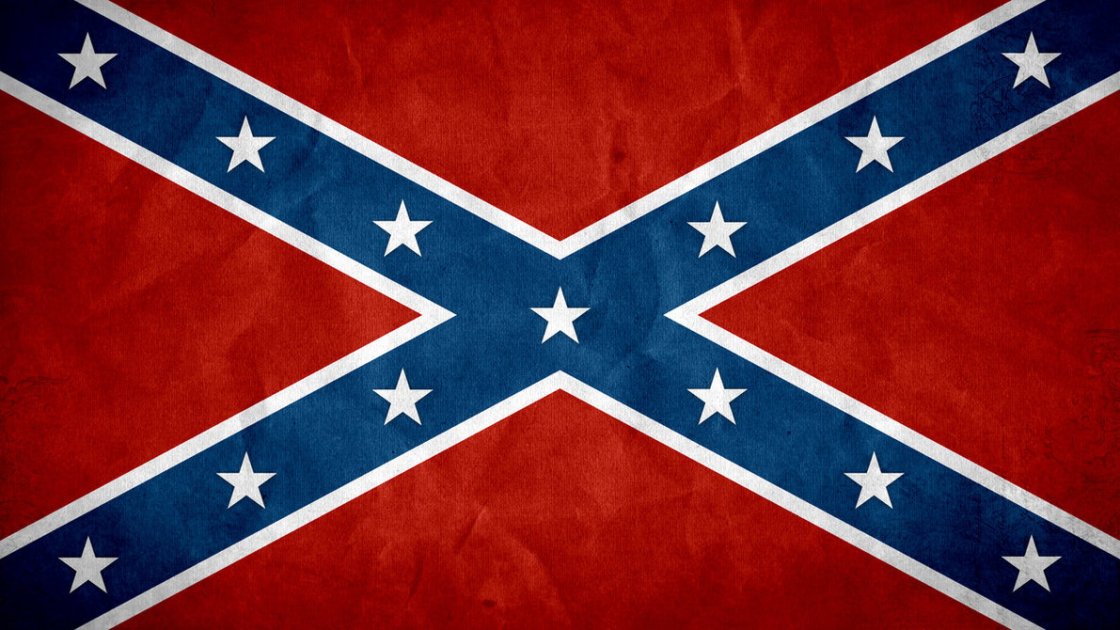Connor Burke – Young Legend
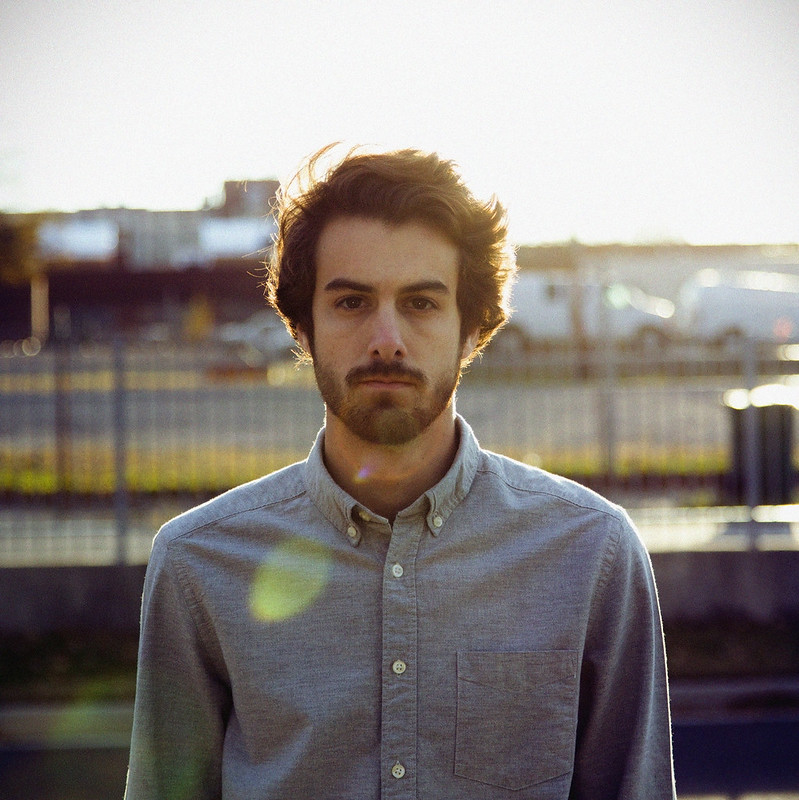
Connor Burke, portrait. November 22, 2015
What can be said about standout, professional, freestyle skateboarder, Connor Burke? Well, first, it is a fact that he’s amazing. Testimonials from a sample of the world’s most legit freestylers confirm this.
His lauded peer, Mike Osterman, says of him:
“Connor Burke is amazing. He’s always had a really smooth, streetish style to his skating. He skates fast and he seems to flip his 8.25″ deck with more ease than most people flip their 7.25″ freestyle twigs.”
Burke’s original inspiration, Keith Renna, says:
“Connor skates with the power of a street skater mixed with the fluidity of a freestyler. He’s amazingly solid.”
Another early inspiration of Connor’s, Tommy Harward, says:
“Yeah, he is awesome. Such a great style and plenty of hammers in his bag. Every once in a while you won’t hear or see much from him. Then I get to thinking “I hope he is still skating.” Then, next thing I know…a new clip will drop and BOOM! He is definitely breathing new life into freestyle, and I love seeing it.”
Most freestylers bring a uniqueness to their skating through their tricks and personal style. With Connor, this is exaggerated. There’s more speed, more movement, and, most glaring perhaps is his overall approach of blurring the boundaries between freestyle and street to where they are obliterated. Although a majority of his favorite skaters skate strictly freestyle, Connor, in his own skating, shows no respect for staying within the confines of separate genres. It’s refreshing to watch, and can leave one with the feeling of, “Why should there be an absolute rule that freestyle not have any obstacles, and only be flatland?” There have been others who mix up street with freestyle, but there’s something about Connor’s skating that has shifted my perception of freestyle. Now, I wonder when obstacles will be allowed in freestyle contests, and included in freestyle demonstrations. And will more freestylers lengthen their boards, and take a break from the flat here and there to pull a trick on an obstacle or two? Here, Connor makes his case for expanding freestyle.
But first, I brought up how he began uploading his skate videos to youtube in 2005, before most skaters even knew about the website.
Connor: That’s right. I realized on October 21st (which is also my birthday) that my YouTube channel turned ten years old. That blows me away because that now means ten years of my life that are publicly documented through video. I think that most people are ashamed of their old videos and remove them at some point. For some reason I never seemed to care about that, so literally everything I’ve ever done in the last ten years is still there.
Nominay: How did you find out about youtube, and how long had you been skating at that point?
C: I don’t specifically remember how I discovered YouTube, I think I just sort of stumbled upon the website somehow. Besides hosting videos on your own personal website, Putfile was really the only option for uploading videos to the internet at that time but they had this really shitty interface. So, there was a serious need for a good video-sharing website at that time. So, once I found YouTube, I ended up signing up for an account immediately, and posted my first video the next day. At that point, I think I had been skating for about 5 years.
I actually have some skate videos that precede YouTube as well, maybe someday I’ll share them. One of the videos includes a really bad “sponsor me” video with a Michael Jackson song in it that I sent to a company that I won’t name.
N: I have to follow that up with what Michael Jackson song? I’m a somewhat-closeted Michael Jackson fan myself (just of his music and dancing, mind you) … but I find it curious that a little kid in the 21st century opts to skate to a MJ song.
C: Oh man, that’s awesome. I hate to break it to you but I’m actually not a big Michael Jackson fan, I like a few of his songs but I enjoy Prince much more. I’ve always liked 80’s music in general though, especially right when I was really falling in love with freestyle skating. And, believe me when I say that my love for 80’s music has no correlation to why I got into freestyle skateboarding – I am totally conscious of pop culture’s glorification of whatever decade happens to be twenty years old – for example, the 90’s are really “in” right now – I’ve always tried my best not to participate in that.
N: Did you skate street first, freestyle first, or did you always do both?
C: I skated street first, starting in 2000. I never really was exposed to anything outside of street until I had been skating for about two years. I saw some old footage of Rodney Mullen in one of the Tony Hawk games and I was blown away by Mullen’s pink cutoff t-shirts and oversized knee pads. Oh yeah, I thought that his skating was interesting too. God, that’s so uninteresting – everyone around my age has the same story about how they discovered freestyle skating.
Sometime in 2005, I had discovered the F-Forum, as well as the existence of Outlook and Reverse Skateboards who were both making freestyle shapes at the time. I was really interested in freestyle because there was virtually nothing for me to skate in Virginia Beach at that point – there was only one skatepark at the time (which I didn’t go to very much, I couldn’t drive yet) and a lack of “spots” to skate as Virginia Beach is very flat. So, that year I got a Keith Renna Outlook Complete for my birthday and the rest is history.
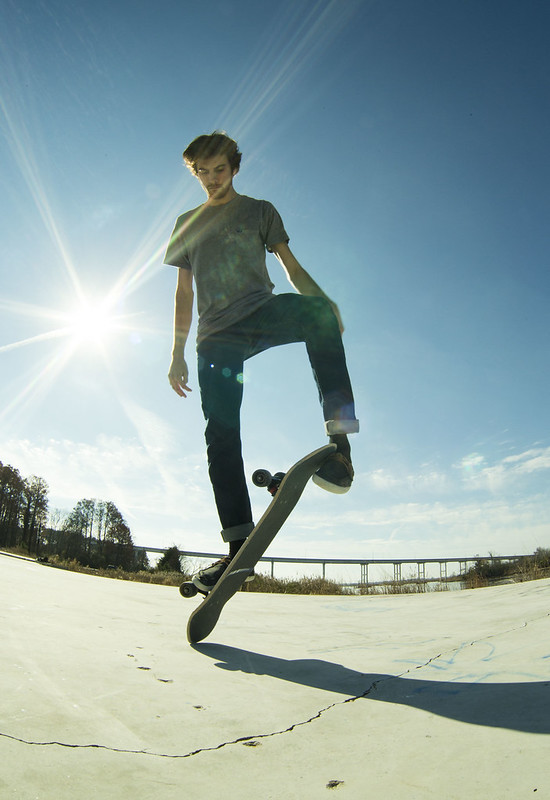
Shine on: Truckstand – November, 2013
N: So Rodney was your freestyle initiation obviously, and a big influence on you as he is to everyone. Did you buy Keith Renna’s board because of his skating?
C: Yes.
N: Who else did you look to that shaped your interpretation of freestyle?
C: It was Renna, Synnott, Harward, and Grogan that were the only guys I cared about for a while. All four of them had a big impact on my skating right off the bat; they were like the gods of the freestyle to me.
I think that my first few years of freestyle I was just interested in landing the basics and coming up with whatever excruciatingly long rail combos I could, so my skating was shaped by a little bit of everybody. However, I think that once I had been freestyling it for four or five years, people like Daryl Grogan, Don Brown, and Steve Rocco ultimately shaped my interpretation of freestyle. That was when I started to really try to polish my style, take advantage of whatever street tricks I could incorporate into freestyle, discover what tricks I felt were worthy of exploring, and what tricks I no longer had interest in doing. It’s tough getting there because there’s so much potential in every facet of freestyle, but not every type of trick was/is for me, and I’m okay with that.

Freestyle in style:
Connor gets cross-footed with a stationary 360 fingerflip.
N: What skaters are you relating to these days?
C: Well, Mike Osterman has definitely become one of my favorites for the past few years. We have very different styles and we do different tricks for the most part but there is something about his style and the fluidity of his tricks that makes his skating so appealing. Some other favorites of mine are Sean Burke, Jesse Whalen, Stefan Albert, Albert Kuncz, and Derek Elliot. I’m also really influenced by street skaters too, all of the riders on Magenta and Polar are great. I really like watching anyone do weird no comply variations, shove-its, reverts, and linking tricks back to back.
N: I can tell that you’d be a natural at skating vert. Will Connor Burke ever skate vert or bowls? What tricks do you imagine you’d like doing on ramps like that? Danny Way once said that every skater should experience doing an air.
C: Whenever I was younger, I always wanted to get into vert skating but couldn’t because there weren’t very many ramps (or even skateparks for that matter) available to me at the time. I can skate bowls and smaller 5 – 8 ft ramps perfectly fine though. Nothing feels better than a frontside air, or catching air for that matter. I sort of come from the tail end of this generation of skaters that go their start by skating shitty homemade launch ramps. And I still love skating launch ramps, there is no other feeling like it. If I go to a skatepark and they have a roll-in with a launch ramp, I’ll spend most of my time skating that and nothing else, even if I look like an idiot.
N: 80’s music is a part time trademark of your video parts. The Smiths and New Order come to mind. How were you exposed to that whole post-punk, alternative rock sub-genre?
C: Well, I was exposed to The Smiths by a friend whenever I was about 15 years old. I’m lucky in that I discovered them at just the right age and time in my life – I literally went months were I would only listen to The Smiths. From there, I got really into Joy Division, New Order, Siouxsie, and Echo & The Bunnymen. And then eventually, I got really into shoegaze music – Galaxie 500, My Blood Valentine, and Spacemen 3. Besides The Smiths, I discovered most of this music myself, on the internet.
I never identified with punk music, I guess I liked the idea of it whenever I was younger, but hated the music on a very basic and superficial level. So, once I discovered post-punk music (it filled both of those needs I just mentioned) and became my go-to genre of music for many years. I think that there is something about post-punk that really compliments skateboarding physically and aesthetically; the reverb, tempo, rhythm, and the overall structure of most post-punk songs act as perfect ingredients for a catchy video part. On top of that, I think that the lyrics really tended to resonate with me whenever I was younger.
N: Let’s talk about contests. Do you show up to them just wanting to see your friends and have fun skating with no expectations, or do you get concerned about skating your best and wanting to place high?
C: I’m never concerned about placing high – I really try not to think about that at all. Contests in the freestyle world also serve as reunions, so I get the most enjoyment out of seeing and talking to others. I always come prepared though, I practice my runs before hand and give it my best. I figure that if I’m going to travel and skate in a contest, I might as well try, as well as come up with a run that I feel is currently representative of my skating.
N: You won two contests recently. What were they?
C: I won the U.S. Championships last year and this year.
Both contests were very rewarding for me. I went four years (between the World champs in 2010, and the U.S. Champs in 2014) without competing because I wasn’t skating regularly while I was in college. I also think that going from placing in 16th in 2010 to placing 1st in 2014 somewhat lifted my spirits.
In all reality, I don’t really pride myself as being a contest skater. I’d much rather pour energy into making a video part than practicing the same tricks over and over again for a contest.
N: Have you only competed in the 3 contests you mentioned?
C: No, I’ve competed in 5 freestyle contests – the 2007 U.S. Championships, 2008 U.S. Championships and then the other three I’ve mentioned. I’ve won a street contest before too, with the aid of incorporating freestyle tricks into my street skating. You get HUGGEEE bonus points for it, haha!
N: I was at 2010 Philly too. I talked with you at one point and you seemed subdued to me… like maybe you weren’t having that good a time. Or maybe you were shy I thought.
C: Yeah, I probably was subdued in 2010 at the World Champs – I was kind of pissed off because I had broken my board accidentally right before the contest and I wasn’t skating as well as I wanted too. Also, I was really shy back then. I’ve grown up a lot since then, at least I think so… Haha.
N: What you said about videos vs contests reminds me of some conversations I had with Renna in 2000, about how were we going to make freestyle have a comeback. I believed promoting it through contests was the way to go. He said contests don’t matter anymore, that this is not the 80’s, and that making videos was where it was at. He turned out to be completely right of course.
C: I’d agree that video parts are more important. I don’t think that freestyle contests are an accurate portrayal of one’s abilities anymore. Contests seem to limit freestylers to doing fairly basic tricks because consistency is so vital to one’s performance – and In my honest opinion, consistency is uninteresting in freestyle. I think that video parts have more potential because they allow you to portray your style and the chance to document whatever tricks you could possibly imagine.

Taking it to the streets:
Connor shows no respect for gravity with this sidewalk scorching impossible.
N: As a freestyler, old school has obviously had a major influence on you as a skater. What about as a street skater? For example, Keith Renna loves 1990’s “Useless Wooden Toys” because of how the street skating in it is freestyle-oriented. Are you a fan of things like the early Plan B stuff or the latter Powell Peralta vids?
C: Yes, definitely. I really like Matt Hensley, Jeremy Klein, Ed Templeton, Gonz, and Natas. I used to watch all of the H-Street videos all of the time and the early Birdhouse videos. That probably shows in my street skating a little bit.
I’m definitely a fan of the Powell Peralta videos, those will always be classics. As for Plan B, I can’t stand watching that stuff, it bores me to death. It’s technical in a gross way that ultimately doesn’t feel right. In my opinion, skateboarding got a little boring somewhere in the mid-90’s. Is that too honest? It just seemed like there was too much of an emphasis on progression and switch skating and not enough on creativity or style.
I really like where street skating is at now though, there’s just so much interesting stuff going on. It’s probably because everything is constantly in my face on instagram.
N: At a time when all freestylers seemed to be skating boards around 7.5 wide, you switched to an 8.25. How did that change come about?
C: My first five years of freestyle skating, I would ride any shape and any size board. I figured out that both double kicks and single kicks both have their advantages and disadvantages over one another. At some point that grew tiresome though, and I was looking for some sort of consistency with what size/shape board I was riding.
I was riding for 17th Street Surf Shop and they were giving me (popsicle) boards every month, on top of the freestyle shapes that I was getting from Jeremy at Small School. So, slowly over the next three years, my street setups started going up in size – I went from a 7.5″ board all the way up to an 8.75″. I realized that was too big, and went back down to 8.5″ – which is still the same street sized board that I’ve been riding since then.
Post-Small School, in 2010 sometime, I started shaping my own freestyle boards. I eventually figured out that I liked an 8.25″ popsicle board for freestyle because it wasn’t too much smaller than the 8.5″ street setup that I had grown really used to. I’m happy I made that decision at some point and stuck with it because it really allowed me to learn new tricks and I finally felt comfortable on my board.
The biggest complaint that I’ve heard about freestylers riding bigger boards is that you have to “work harder” to land certain freestyle tricks. I’m going to call bullshit on that. I believe that You SHOULD bend your knees whenever you do a trick and you SHOULD strive to jump a half an inch higher when flipping your board. Nobody should look like a straight-legged puppet whenever they skate. Currently, most street skaters are riding boards sized anywhere from 8″ to 8.5″. I just don’t understand how freestylers can collectively demand any kind of legitimacy or growth whenever the riders are doing their technical tricks on boards that are the same size as a street “mini” – boards that are marketed towards children in the skate industry. I’m not trying to preach conformity or hate on smaller boards altogether, I’m trying to advocate against purists that fetishize 30 year old skateboard shapes/sizes, and I’m trying to say “give bigger boards a chance,” particularly to my generation and future generations of freestylers. Although it may seem superficial, I believe that it is a crucial step towards modernizing the discipline.
N: Darren Dyk use to freestyle on a boat of a longboard, tech stuff no problem. Whalen skates a wide board. I think Grogan does. Probably others. Wide is coming around. Freestyle has to evolve, get more aggressive, and incorporate some obstacles into its regiment. Not that there are any rules of course, but when things don’t change, they die. Skateboarding always changes, sooner or later.
C: Dude, that’s badass! Yeah, it’s something I feel very passionate about. People like to bitch and moan about progression while riding a board shape that was engineered in 1985. There are so many contradictions in freestyle. I’m a relatively quiet guy and I try to the best of my ability to stay out of the nonsensical arguing.
N: Where is the Connor Burke pro model? Are your preferred specifications not deemed marketable? At 8.25 by 31.75 it’s pretty much the same specs as most boards, right?
C: My pro model is coming sometime in 2016. I’ve been waiting a really long time for the wood shop to send me a prototype. The dimensions are similar to what you mentioned and it’s definitely marketable. I don’t really want to say much more about it, though.
N: In the year and a half since your graduation from Virginia Commonwealth, what have you been doing career-wise, and where do you see that taking you? What do you hope to accomplish with your filmmaking degree, or has it already provided you with the inroads you were looking for?
C: I now work as a full-time videographer and video editor in the marketing department for a great little company called VibrAlign. They distribute shaft alignment and condition monitoring tools. Some machinery is so important that if it fails, it could cost the company thousands or even millions of dollars in lost production or repairs. So, these tools that they sell help to make sure that their machinery is up to par and operating healthily. My job entitles creating educational content about how to use these tools as well as commercial advertisements.
From about April to October, as soon as I get off from work at 4, I will skate as much as I can until it gets dark outside. Some days I’m so tired and the last thing that I feel like doing is skating, but I still force myself to do it anyway. In the winter, since it’s dark by 4:30 some days, I don’t have a place to skate right when I get out of work, so my skating is usually limited to the weekends. I really want to find an indoor space to skate in this winter though.
N: How did snow skating come about, and do you plan to do more of it, come winter?
C: My family is from Michigan, so every year around Christmas time, we would go there for Christmas break. So, one year before going to Michigan I decided to buy a snowskate mainly because I thought it looked more similar to skating than snowboarding did).
In Richmond, we get snow that accumulates maybe three or four times a year, so, it’s totally something I do for fun – I’ve never taken it seriously.
N: What’re the most progressive snow skate tricks you’ve done?
C: I’d say the most “progressive” trick I’ve done on a snowskate is an impossible, maybe..?
N: How far can the possibilities with it go?
Snowskating has grown a lot since I’ve dabbled in it, thanks mainly to Ambition Snowskates, as well as Icon Snowskates. I think that in ten years time, it’s going to be very popular – maybe even just as popular as snowboarding.
N: Any plans on getting married soon? Do the state of world affairs give you any pause on starting a family?
C: I’ve been with my girlfriend for almost two years now and we both want to get married eventually. Right now, we are living in a small one bedroom apartment, so we both want to move out of there within the next year and start renting a small house or duplex that we can call a “home”. I think that we both want to be very comfortable financially and have a place that feels like a home before we make that step. I love her to death though, and she couldn’t be more supportive with my skating.
N: Any final thoughts on freestyle?
C: Since, I’ve been involved in freestyle skateboarding, I’ve witnessed a constant state of collective restlessness from those that would like to see the discipline become swallowed up by the mainstream skate industry. Ultimately, freestyle is, in my opinion, the most personal form of skateboarding. I’d rather take solace in the “personal” aspect of skateboarding than worry about the big picture, or whatever it is that realistically lies outside of my control. If freestyle skateboarding isn’t making you happy the way that it already is, then maybe you should try NASCAR racing, extreme scootering, or golf.
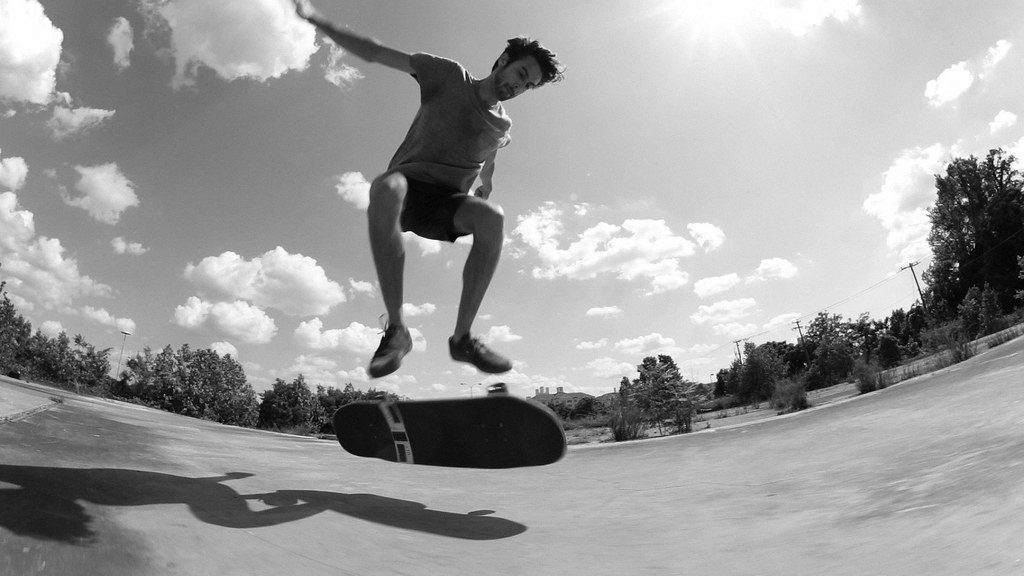
I know what you did last summer:
Connor Burke – Fakie FS M80 to BigSpin Revert BigSpinOut – June, 2015








